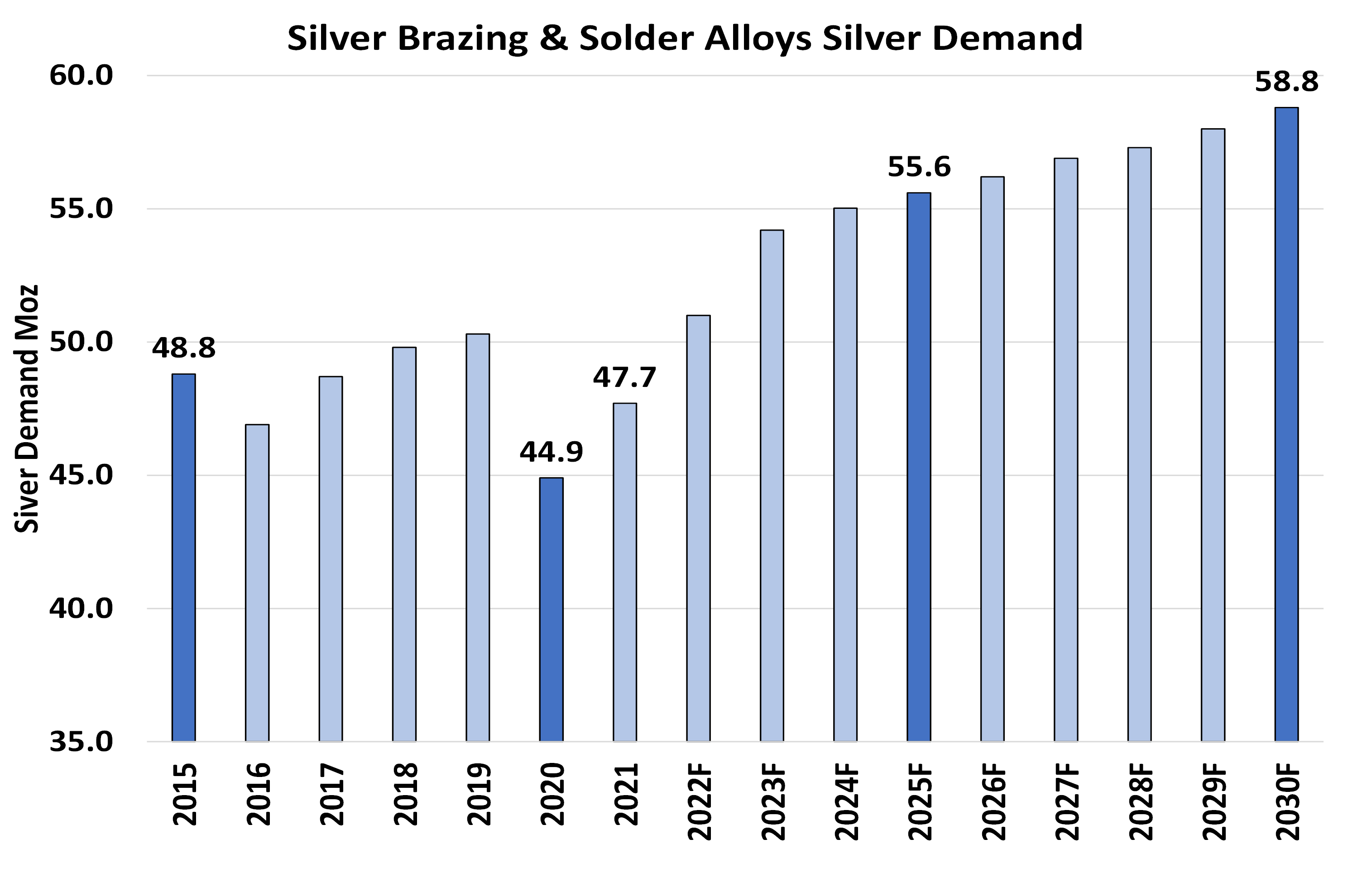(Washington D.C. – June 15, 2022) An often underappreciated but important component of silver’s use in industry is its essential role in brazing and soldering, with nearly a half-billion ounces of silver consumed in this sector in the past decade.
Brazing and soldering are methods of joining two or more metals and are commonly used in the manufacture of pipes, heating and cooling systems, electronic instruments, and jewelry. In 2021, brazing and soldering alloys used 47.7 Moz of silver, representing 9.3 percent of the total industrial demand for silver that year. By 2030, the demand for silver used in brazing and soldering is forecast to reach 58.8 Moz, a 23 percent increase over 2021, according to a new Market Trend Report released today by the Silver Institute, “Silver in Brazing and Solder Alloy Materials.”
For centuries the two most common methods of joining metal tubes and fittings have been brazing and soldering. These methods are similar, yet several distinct differences set them apart. For example, solder often uses silver and tin filler materials and is conducted at temperatures of 600oF, while brazing frequently uses filler metals and alloys such as silver, copper, and zinc. Most brazing occurs at hotter temperatures — 800oF and 2,000oF.
 Source: World Silver Survey and Precious Metals Commodity Management
Source: World Silver Survey and Precious Metals Commodity Management
The report, authored by the consultancy Precious Metals Commodity Management, maintains silver will continue to play an essential role in these applications. The report provides an overview of the fundamentals and history of brazing and soldering technology, the pros and cons of each, and their various market segments. End-uses highlighted in the report include plumbing and piping, heating and air conditioning, automotive electronics markets, light-emitting diodes, the jewelry silver solder market, printed circuit boards, and the semiconductor industry. The report concludes with a forecast for silver’s use in these applications through 2030.
The projected increase in demand through 2030 is due to future global infrastructure growth, including increased plumbing and pipe joining and growing vehicle demand (internal combustion engine and electric vehicles). Demand for heating and air conditioning systems is also forecast to increase. The electronics market, including light-emitting diodes and printed circuit boards, is also expected to expand, especially in automotive electronics. They have higher temperature and vibration requirements, motivating designers to use additional silver content for strength and temperature resistance performance.
The report states that prospects for expansion in the silver brazing and solder alloy market remain strong, and that silver will continue to play a vital role in joining technologies, especially for electronics, through 2030.
To download the complimentary report, please click here.
# # #
The Silver Institute serves as the silver industry’s principal voice in expanding public awareness of the importance of silver to modern society. One of its primary missions is to provide the global market with reliable statistics and information on silver. The Institute’s Market Trend Reports focus on critical sectors of silver demand to bring awareness to silver’s varied and growing demand, and today’s report is part of that series. For more information on silver and the Silver Institute, please visit www.silverinstitute.org.

Recent Comments